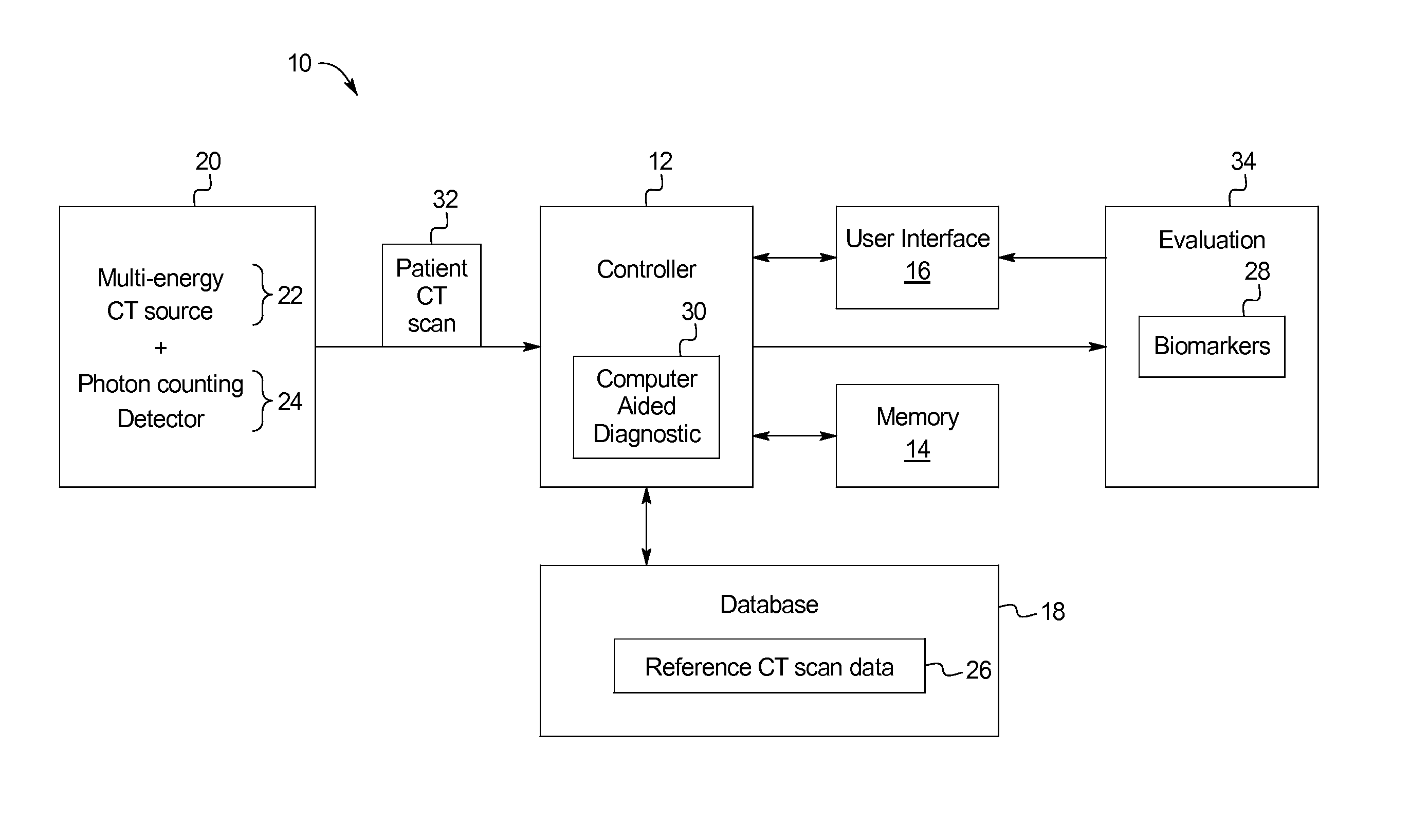Systems and methods for evaluating a brain scan
- Summary
- Abstract
- Description
- Claims
- Application Information
AI Technical Summary
Benefits of technology
Problems solved by technology
Method used
Image
Examples
Embodiment Construction
[0033]The following description details embodiments of inventive systems and methods for evaluating a brain scan using reference data. The systems and methods use a dataset provided from a medical imagining device to derive an objective diagnosis of concussions or mTBI. The examples below rely primarily on the example of using a CT scanner as the medical imagining device, but it is understood that the advantages of the systems and methods provided herein can be attained using alternative, or additional, medical imaging devices.
[0034]FIG. 1 illustrates an example of the present subject matter using a computed tomography system 10. As shown in FIG. 1, the computed tomography system 10 includes a CT scanner 20 including a multi-energy x-ray source 22 in connection with a photon counting detector 24 configured to collect a patient scan data 32 of a patient.
[0035]The CT scanner 20 uses a rotating anode (x-ray source 22) to generate x-rays that pass through an object and are collected on ...
PUM
 Login to View More
Login to View More Abstract
Description
Claims
Application Information
 Login to View More
Login to View More - R&D
- Intellectual Property
- Life Sciences
- Materials
- Tech Scout
- Unparalleled Data Quality
- Higher Quality Content
- 60% Fewer Hallucinations
Browse by: Latest US Patents, China's latest patents, Technical Efficacy Thesaurus, Application Domain, Technology Topic, Popular Technical Reports.
© 2025 PatSnap. All rights reserved.Legal|Privacy policy|Modern Slavery Act Transparency Statement|Sitemap|About US| Contact US: help@patsnap.com



